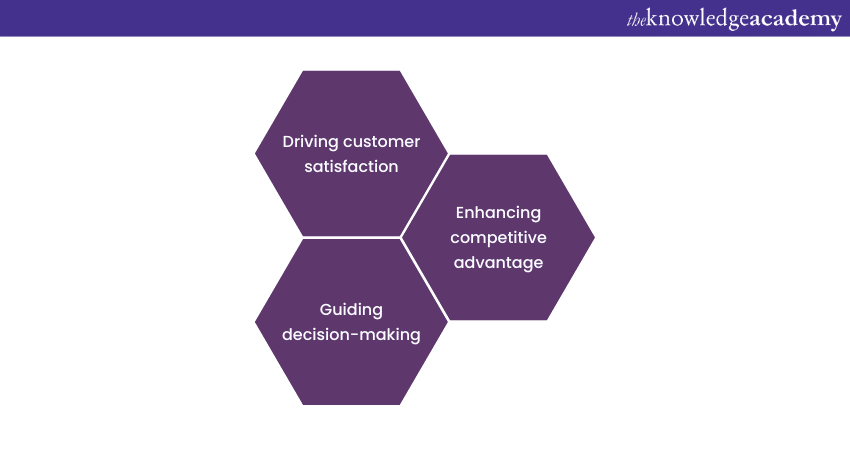We may not have the course you’re looking for. If you enquire or give us a call on +971 8000311193 and speak to our training experts, we may still be able to help with your training requirements.
We ensure quality, budget-alignment, and timely delivery by our expert instructors.

In the modern business landscape, the significance of value in management cannot be overstated. Value lies at the core of successful organisations, driving growth, customer satisfaction, and overall success. This blog will delve into the Role of Value in Management, explore its key elements, discuss its role in business operations, and shed light on the benefits of prioritising value.
Table of Contents
1) Understanding the Role of Value in Management
a) Driving customer satisfaction
b) Enhancing competitive advantage
c) Guiding decision-making
2) Conclusion
Understanding the Role of Value in Management
The Role of Value in Management is of utmost importance in today's dynamic business environment. Value serves as a guiding principle that influences Decision-Making, shapes strategies, and drives organisational success. In essence, value encompasses the worth, significance, and benefits a company delivers to its Stakeholders, including customers, employees, and shareholders. This section of the blog will elaborate on the several roles that value plays in management.

Driving customer satisfaction
Driving customer satisfaction is an important aspect of value management that significantly impacts the success and growth of an organisation. When customers are satisfied with the products, services, and overall experiences a company provides, they are likelier to develop a positive perception, establish loyalty, and become brand advocates.
A key component of driving customer satisfaction is understanding and meeting customer expectations. Businesses possess the ability to gain valuable insights into what customers value and desire by conducting market research, gathering customer feedback, and analysing customer preferences. This knowledge enables companies to tailor their offerings to meet customer needs, preferences, and aspirations.
One way to drive customer satisfaction is by consistently delivering high-quality products and services. Quality is a vital factor that customers consider when evaluating their satisfaction levels. By guaranteeing that products and services meet or exceed quality standards, businesses can instil confidence in their customers and build trust. Meeting quality expectations also contributes to the overall value proposition and enhances the customer's perception of the brand.
Another driver of customer satisfaction is providing exceptional customer service. When customers encounter friendly, knowledgeable, and efficient service representatives who promptly address their inquiries or concerns, it creates a positive impression and fosters satisfaction. Effective Communication, active listening, and empathy are essential in delivering outstanding customer service experiences.
Personalisation and customisation are also crucial elements in driving customer satisfaction. Customers appreciate tailored experiences that cater to their specific needs and preferences. Businesses can personalise interactions, recommendations, and offers by leveraging data and insights, making customers feel valued and understood. This level of personalisation enhances the overall customer experience and contributes to higher satisfaction levels.
Furthermore, the ease and convenience of doing business with a company significantly impact customer satisfaction. Simplifying processes, reducing friction, and streamlining interactions improves customer engagement with the brand. This can include user-friendly websites, intuitive interfaces, hassle-free purchasing processes, and efficient after-sales support.
Regularly seeking feedback from customers is also an essential step for driving satisfaction. By actively soliciting feedback through surveys, reviews, or feedback forms, businesses demonstrate their commitment to continuous improvement and customer-centricity. This feedback provides valuable insights into areas where improvements can be made, allowing businesses to address concerns, refine their offerings, and better meet customer expectations.
Unlock your potential in managing successful projects with our MoV Training - Sign up now!
Enhancing competitive advantage
Enhancing competitive advantage is one of the most important aspects of value management that enables businesses to differentiate themselves from competitors and thrive in the marketplace. In today's dynamic business landscape, having a competitive edge is essential for long-term success and sustainability.
Competitive advantage refers to the unique strengths and capabilities that allow a business to outperform its rivals. It positions a company as a preferred choice among customers, giving it an edge in market share, profitability, and overall performance. By enhancing competitive advantage, businesses can establish themselves as leaders in their industry and effectively withstand market pressures.
One way to enhance competitive advantage is by focusing on delivering superior value to customers. Value is the key differentiator that sets a business apart from its competitors. By understanding customer needs, preferences, and pain points, businesses can develop unique value propositions that address those requirements. When customers perceive a higher value in a particular brand or offering, they are more likely to choose it over alternatives, giving the business a competitive edge.
Innovation is another crucial factor in enhancing competitive advantage. By continuously innovating and introducing new products, services, or processes, businesses can stay ahead of the curve and meet evolving customer needs. Innovation enables companies to offer something fresh, unique, and valuable, setting them apart from competitors who may need to be more active and adapt.
Furthermore, a strong focus on customer experience can contribute to a competitive advantage. Providing exceptional customer experiences differentiates a business from its competitors. When customers have positive interactions, seamless journeys, and memorable experiences with a brand, they are more likely to remain loyal and recommend the company to others.
Effective Branding and positioning also play a significant role in enhancing competitive advantage. A strong and distinctive brand image helps a business stand out from competitors and leaves a lasting impression on customers. Businesses are able to establish a strong brand identity that resonates with target customers by clearly communicating the unique value proposition, brand values, and benefits.
Take your project management skills to the next level with our combined MoV Foundation & Practitioner course - Register now and become a certified expert!
Guiding decision-making
Lastly, guiding decision-making is a fundamental role that value plays in management. Effective decision-making is crucial for the success and growth of any organisation, and the Principles of Value Management serve as a guiding framework for making informed and strategic choices.
Value helps guide decision-making by providing a framework for evaluating options and assessing their potential impact. When making decisions, managers need to consider the value proposition of each alternative and how it aligns with the organisation's goals, objectives, and stakeholders' expectations, as outlined in the Stages of Value Management.
One way value guides decision-making is by considering each option's potential value to customers. Understanding customer needs and preferences is essential in evaluating the value of different alternatives. By assessing the potential value created for customers, managers can prioritise options that are more likely to resonate and meet customer expectations, ultimately driving customer satisfaction and loyalty.
Value also guides decision-making by considering the value potential for the organisation itself. This involves assessing each option's financial implications, market potential, and overall strategic fit. By weighing the potential value in revenue generation, profitability, market share, and competitive advantage, managers can make decisions that align with the organisation's long-term success.
Moreover, value helps guide decision-making by considering the impact on various stakeholders. Organisations have multiple stakeholders, including employees, shareholders, suppliers, and the community. Decision-makers must evaluate how each option will create value or impact these stakeholders. By considering the potential value of each stakeholder group, managers can make decisions that align with the organisation's values and foster positive relationships.
Value also plays a role in resource allocation and prioritisation. Organisations need more resources, including financial, human, and time resources. Value helps guide decision-making by considering which options will generate the most significant value given the available resources. By allocating resources to options with a higher value potential, managers can optimise resource utilisation and ensure that efforts are focused on initiatives that contribute the most to the organisation's goals.
Furthermore, value guides decision-making by promoting a long-term perspective. By evaluating the potential value created over the long term, managers can make decisions supporting the organisation's growth, reputation, and stakeholder relationships.

Conclusion
Value is the cornerstone of effective management, guiding decision-making, enhancing customer satisfaction, and driving competitive advantage. Organisations can create value that resonates with customers and stakeholders by focusing on key elements such as quality, innovation, and customer experience. Implementing value-centric practices increases customer loyalty, improves brand reputation, and enhances employee engagement.
Accelerate your career in project management? Register for our comprehensive MoV Training Courses today and gain the skills to excel!
Upcoming Business Skills Resources Batches & Dates
Date
 MoV® Foundation
MoV® Foundation






 Top Rated Course
Top Rated Course


 If you wish to make any changes to your course, please
If you wish to make any changes to your course, please


